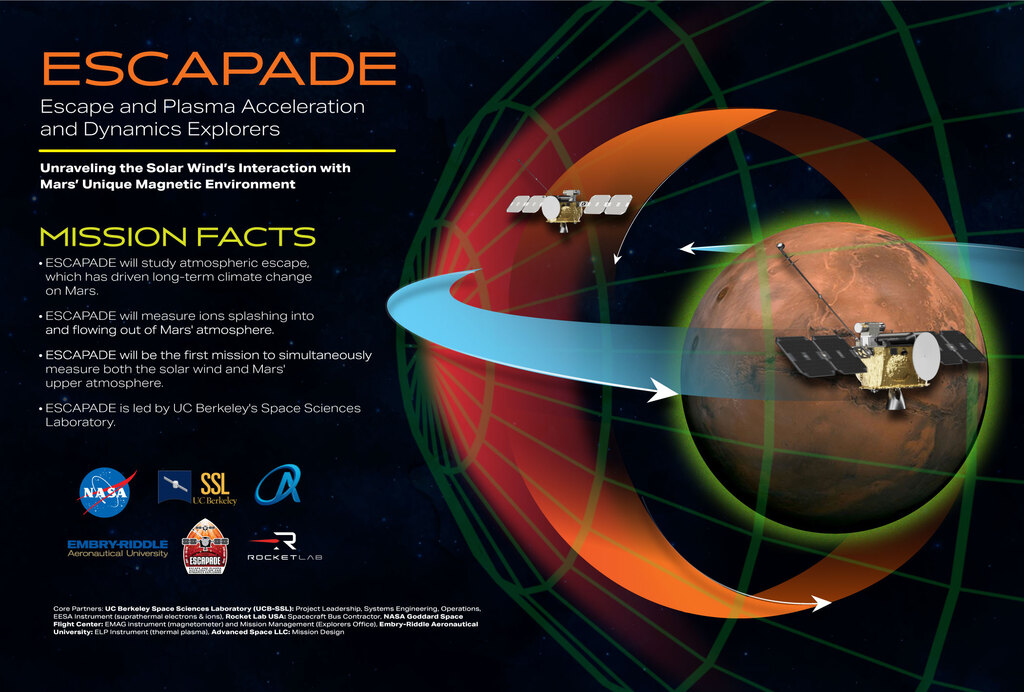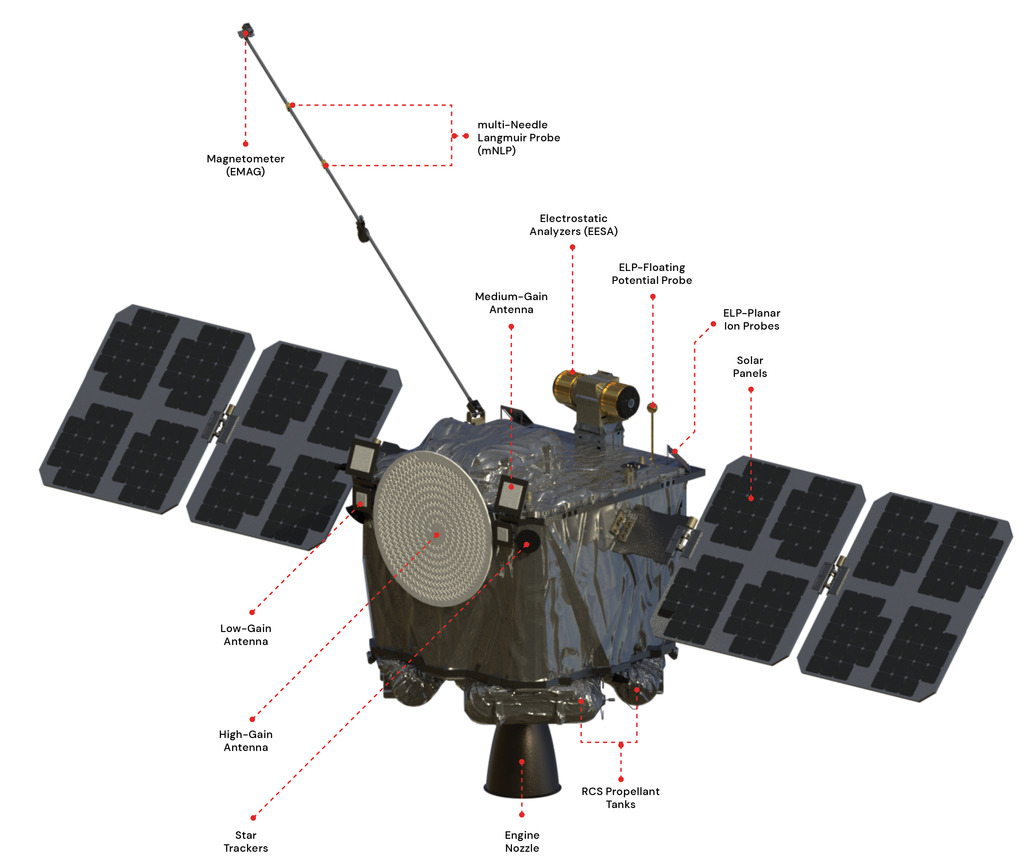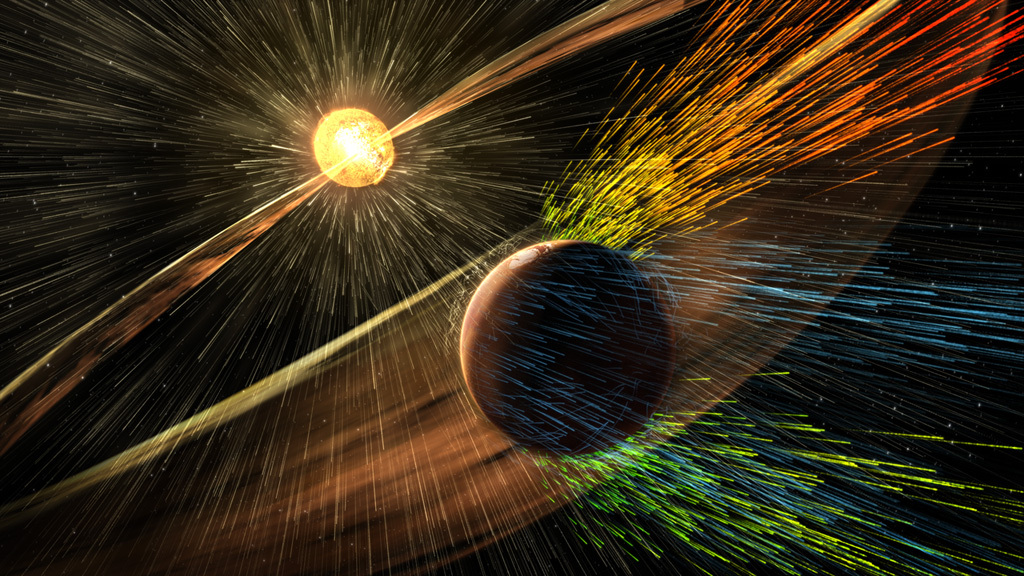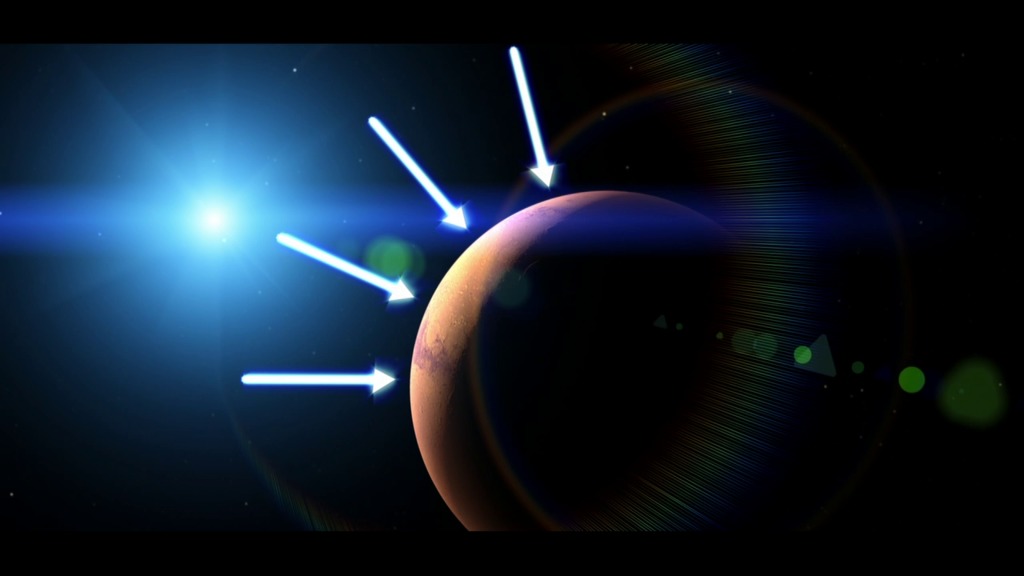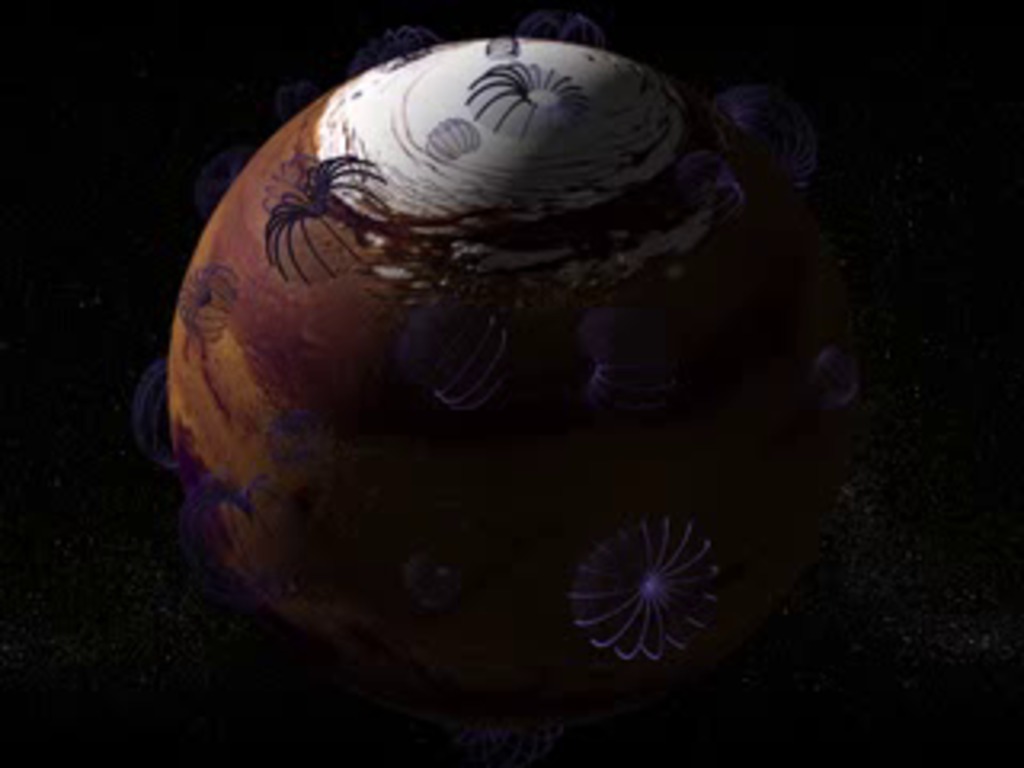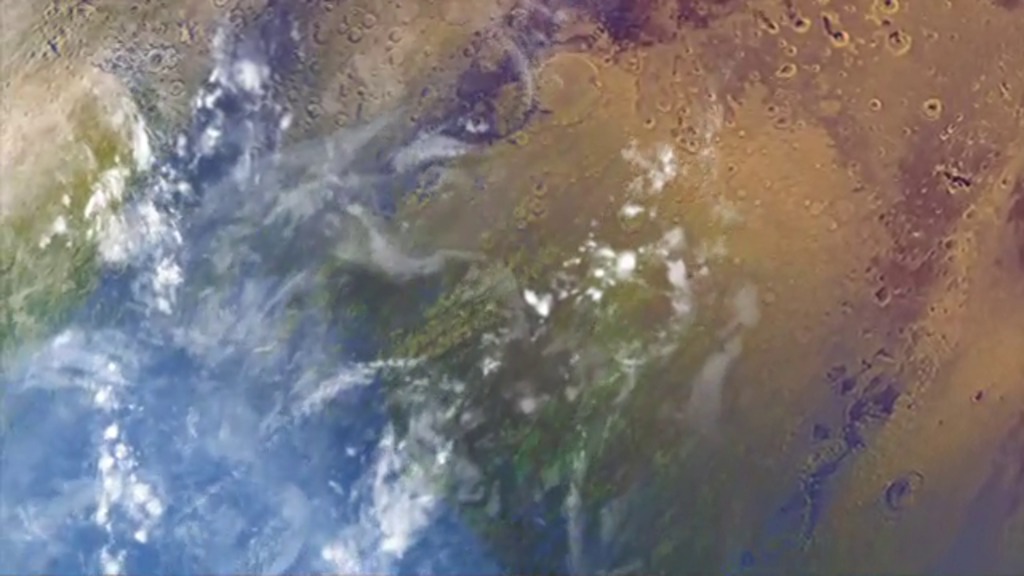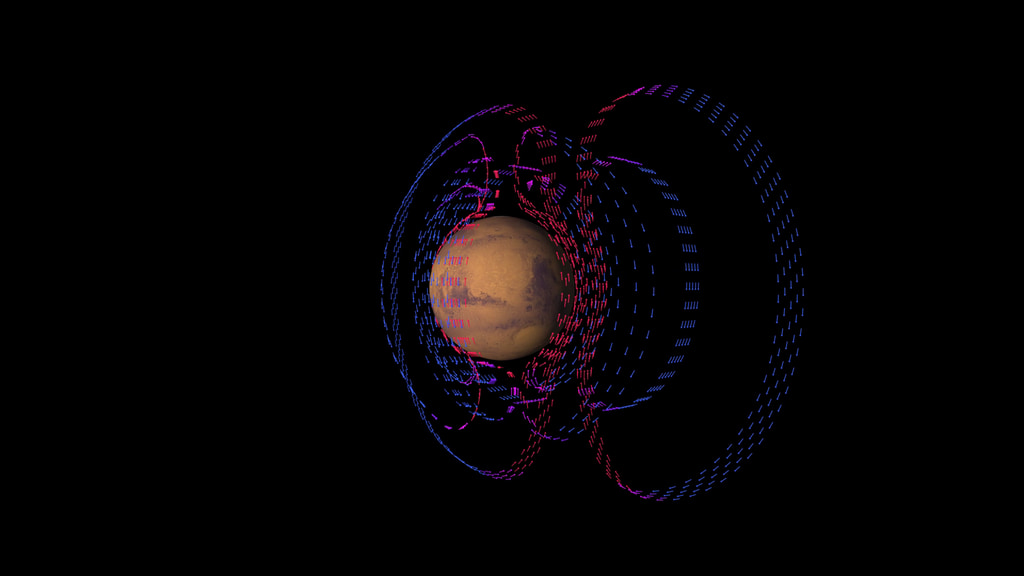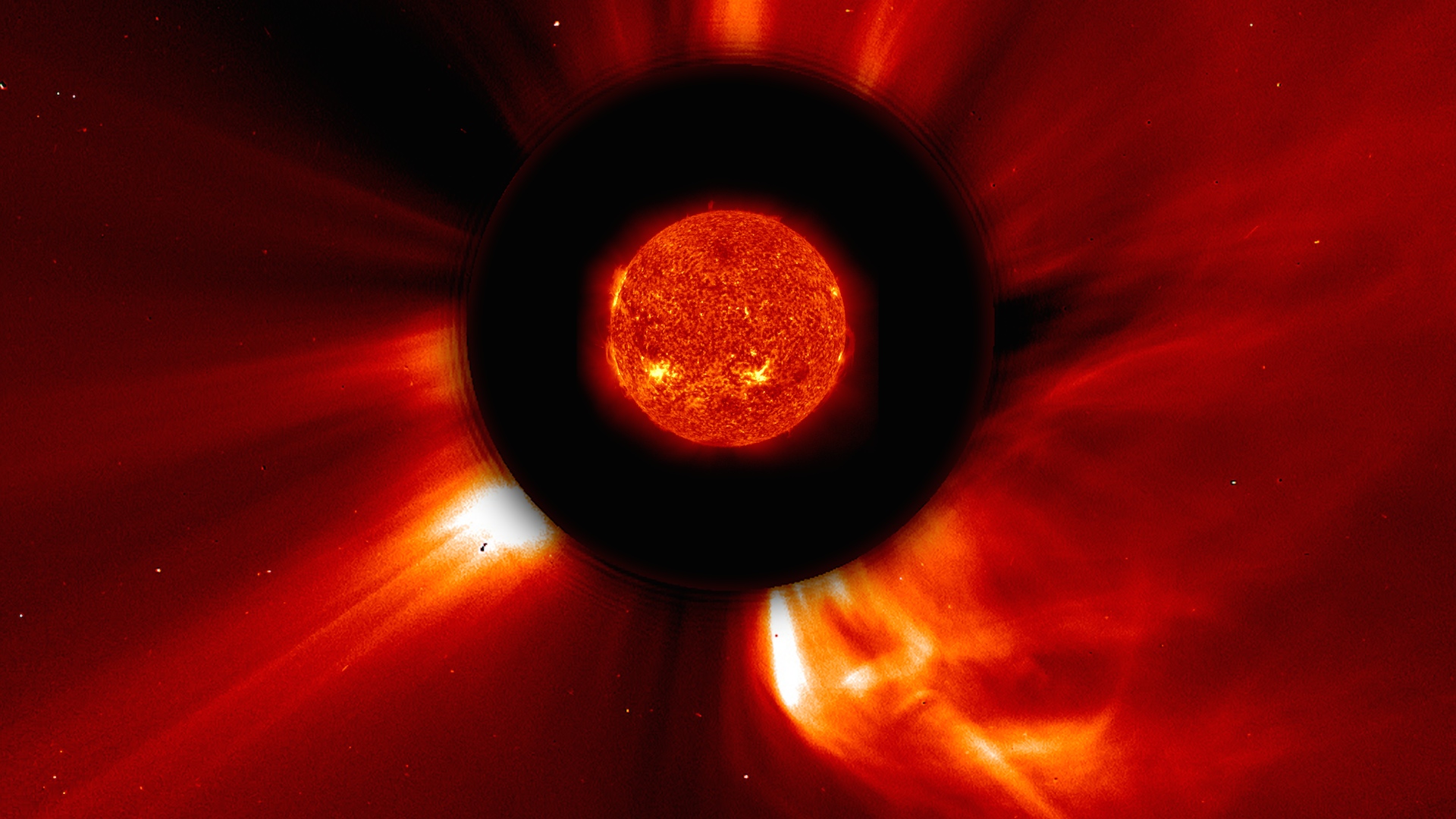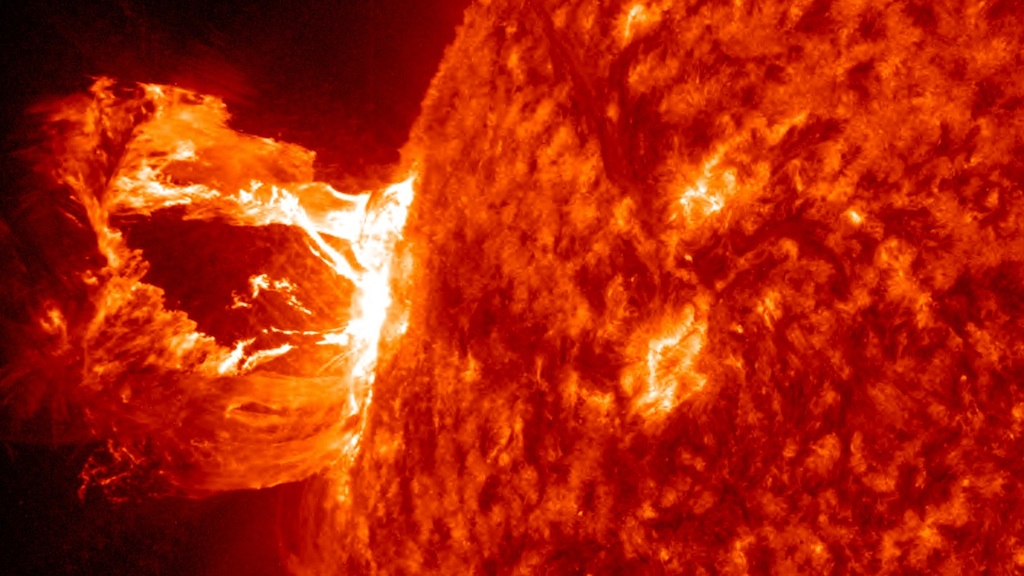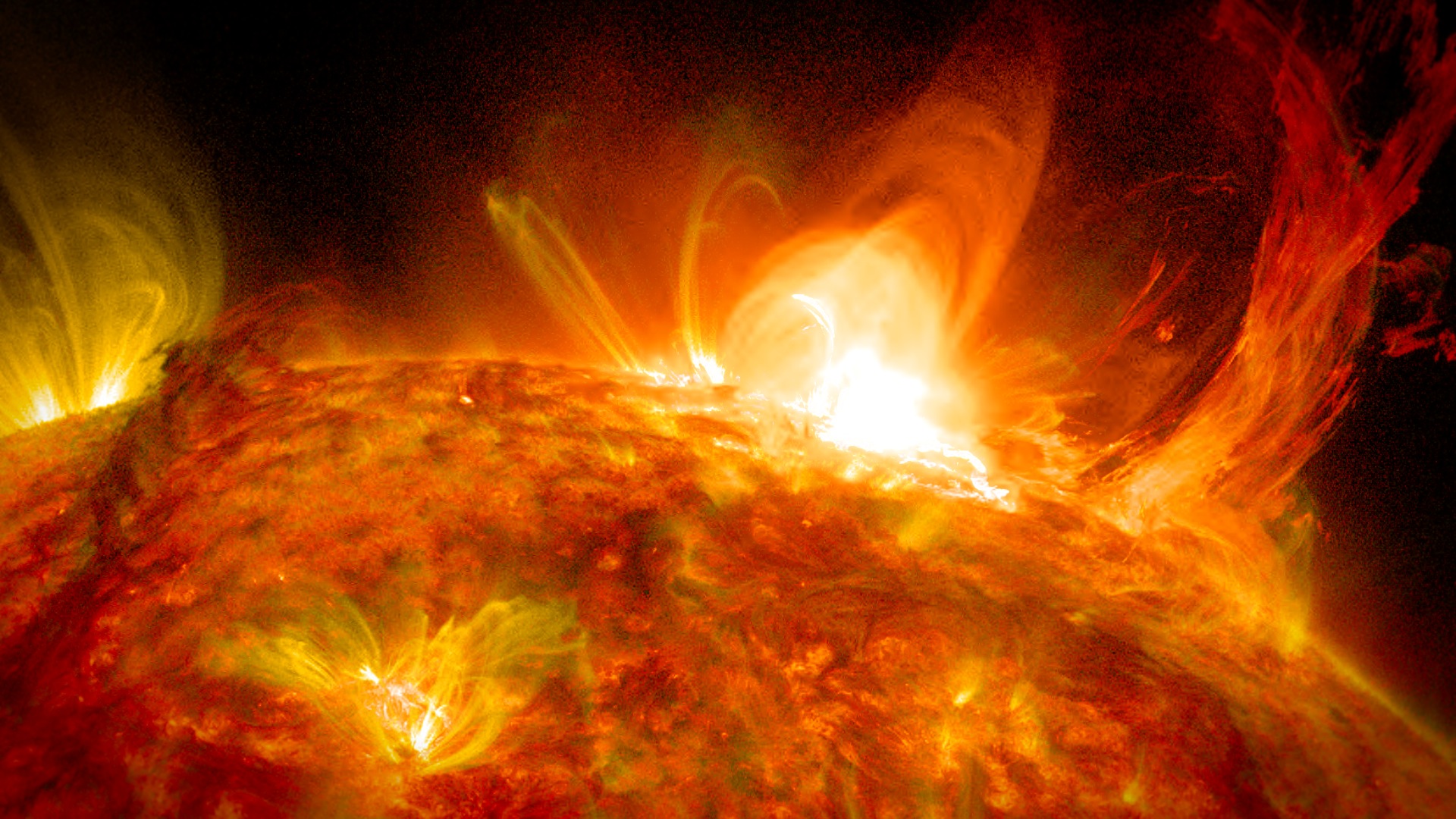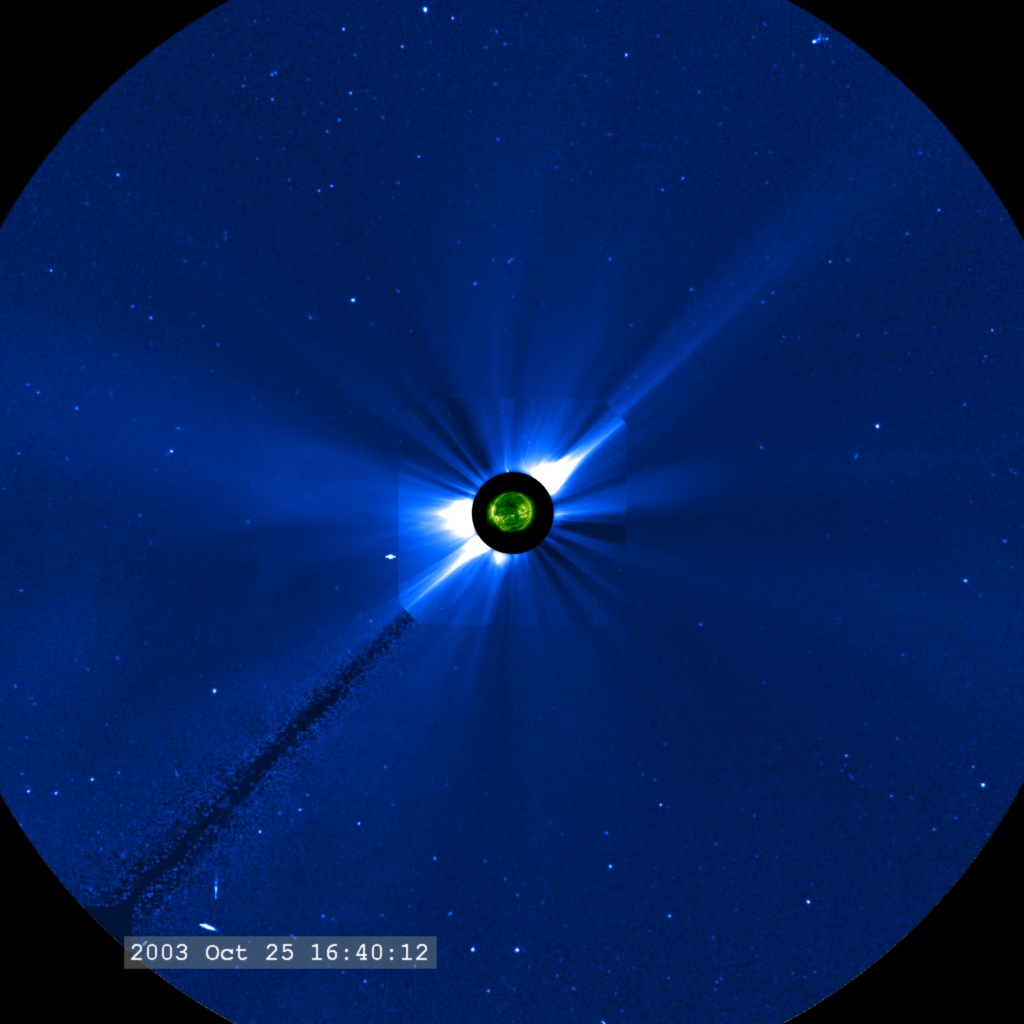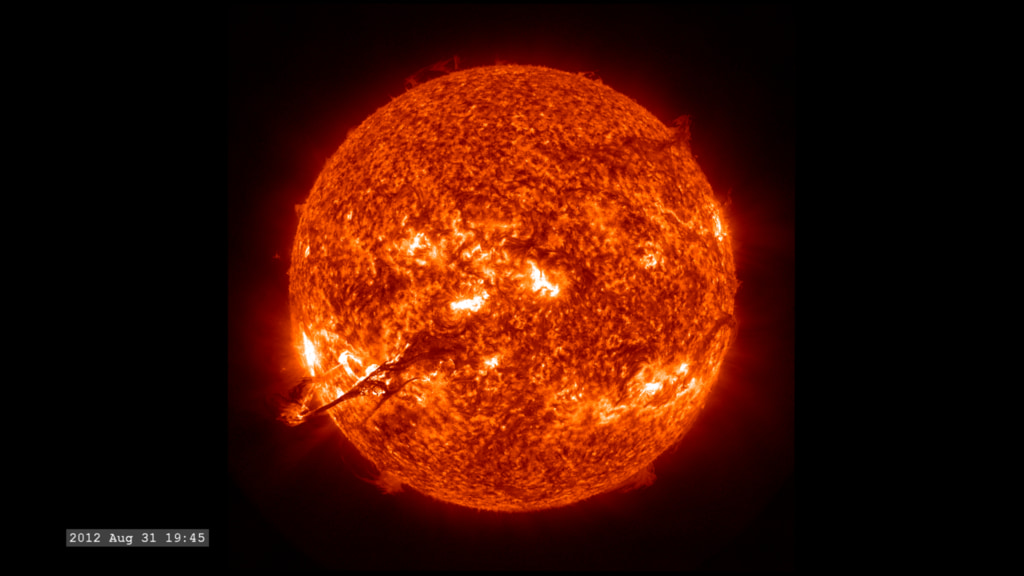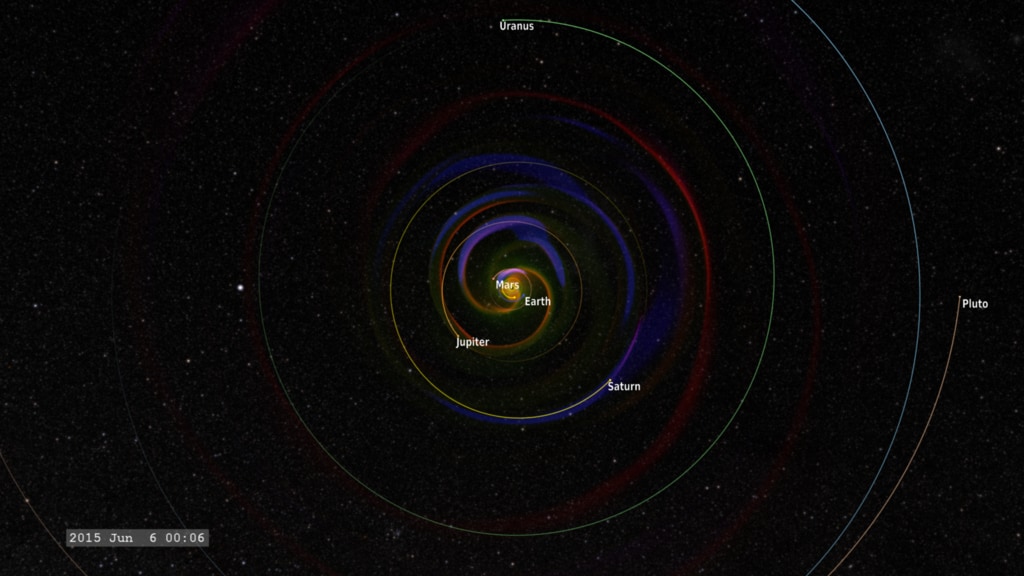ESCAPADE
Overview
The Escape and Plasma Acceleration and Dynamics Explorers, or ESCAPADE, will use two identical spacecraft to investigate how the solar wind interacts with Mars’ magnetic environment and how this interaction drives the planet’s atmospheric escape. The first multi-spacecraft orbital science mission to the Red Planet, ESCAPADE’s twin orbiters will take simultaneous observations from different locations around Mars to reveal the planet’s real-time response to space weather and how the Martian magnetosphere changes over time. The data returned from the ESCAPADE spacecraft will provide new insight into the evolution of Mars’ climate, contributing to the body of research investigating how Mars began losing its atmosphere and water system.
The ESCAPADE mission is managed by the Space Sciences Laboratory at the University of California, Berkeley, with key partners Rocket Lab, NASA's Goddard Space Flight Center, Embry-Riddle Aeronautical University, Advanced Space LLC, and Blue Origin.
Read the latest news about ESCAPADE - https://science.nasa.gov/mission/escapade/
ESCAPADE Animations
ESCAPADE Launch Phase and Deployment
Go to this pageThe Escape and Plasma Acceleration and Dynamics Explorers, or ESCAPADE, will use two identical spacecraft to investigate how the solar wind interacts with Mars’ magnetic environment and how this interaction drives the planet’s atmospheric escape. The first multi-spacecraft orbital science mission to the Red Planet, ESCAPADE’s twin orbiters will take simultaneous observations from different locations around Mars to reveal the planet’s real-time response to space weather and how the Martian magnetosphere changes over time.ESCAPADE is the payload for the inaugural launch of Blue Origin’s New Glenn rocket, named after John Glenn, the first American astronaut to orbit Earth. New Glenn is a single-configuration, heavy-lift orbital launch vehicle capable of routinely carrying both spacecraft and people to low-Earth orbits, geostationary transfer orbits, cislunar orbits (between the Earth and Moon), and beyond via Earth-departure orbits like the one required for ESCAPADE.The ESCAPADE mission is managed by the Space Sciences Laboratory at the University of California, Berkeley, with key partners Rocket Lab, NASA's Goddard Space Flight Center, Embry-Riddle Aeronautical University, Advanced Space LLC, and Blue Origin. ||
ESCAPADE Mission Spacecraft Beauty Passes
Go to this pageNASA’s Escape and Plasma Acceleration and Dynamics Explorers (ESCAPADE) mission will study the interaction between the solar wind and Martian atmosphere. Two identical spacecraft will orbit around the Red Planet to understand the structure, composition, variability, and dynamics of Mars’ unique hybrid magnetosphere, including its real-time response to space weather.The mission will leverage its unique dual viewpoint on the Mars environment to explore how the solar wind strips atmosphere away from Mars to better understand how its climate has changed over time — so much that Mars no longer supports liquid water on its surface. The pair will be the first multi-spacecraft orbital science mission to Mars.ESCAPADE is part of the NASA Small Innovative Missions for Planetary Exploration (SIMPLEx) program. The mission is managed by the University of California Berkeley’s Space Sciences Laboratory, with key partners Rocket Lab, NASA Goddard Space Flight Center, Embry-Riddle Aeronautical University, Advanced Space LLC, and Blue Origin. ||
ESCAPADE B-Roll
ESCAPADE Instrument Build and Testing
Go to this pageThe Escape and Plasma Acceleration and Dynamics Explorers, or ESCAPADE, will use two identical spacecraft to investigate how the solar wind interacts with Mars’ magnetic environment and how this interaction drives the planet’s atmospheric escape.The first multi-spacecraft orbital science mission to the Red Planet, ESCAPADE’s twin orbiters will take simultaneous observations from different locations around Mars to reveal the planet’s real-time response to space weather and how the Martian magnetosphere changes over time.ESCAPADE will analyze how Mars’ magnetic field guides particle flows around the planet, how energy and momentum are transported from the solar wind through the magnetosphere, and what processes control the flow of energy and matter into and out of the Martian atmosphere. The data returned from the ESCAPADE spacecraft will provide new insight into the evolution of Mars’ climate, contributing to the body of research investigating how Mars began losing its atmosphere and water system.The ESCAPADE mission is managed by the Space Sciences Laboratory at the University of California, Berkeley, with key partners Rocket Lab, NASA's Goddard Space Flight Center, Embry-Riddle Aeronautical University, Advanced Space LLC, and Blue Origin. ||
ESCAPADE Spacecraft Development Images
Go to this sectionThe Escape and Plasma Acceleration and Dynamics Explorers, or ESCAPADE, will use two identical spacecraft to investigate how the solar wind interacts with Mars’ magnetic environment and how this interaction drives the planet’s atmospheric escape.The first multi-spacecraft orbital science mission to the Red Planet, ESCAPADE’s twin orbiters will take simultaneous observations from different locations around Mars to reveal the planet’s real-time response to space weather and how the Martian magnetosphere changes over time. The data returned from the ESCAPADE spacecraft will provide new insight into the evolution of Mars’ climate, contributing to the body of research investigating how Mars began losing its atmosphere and water system.The ESCAPADE mission is managed by the Space Sciences Laboratory at the University of California, Berkeley, with key partners Rocket Lab, NASA's Goddard Space Flight Center, Embry-Riddle Aeronautical University, Advanced Space LLC, and Blue Origin.The spacecraft were designed, built, integrated, and tested at Rocket Lab’s Spacecraft Production Complex and headquarters in Long Beach, California. Based on Rocket Lab’s Explorer spacecraft, a configurable, high delta-V interplanetary platform, the duo features Rocket Lab-built components and subsystems, including solar panels, star trackers, propellant tanks, reaction wheels, reaction control systems, radios, and more.
ESCAPADE Testing and Integration
Go to this sectionThe Escape and Plasma Acceleration and Dynamics Explorers, or ESCAPADE, will use two identical spacecraft to investigate how the solar wind interacts with Mars’ magnetic environment and how this interaction drives the planet’s atmospheric escape.The spacecraft were designed, built, integrated, and tested by Rocket Lab at their Spacecraft Production Complex and headquarters in Long Beach, California. Based on Rocket Lab’s Explorer spacecraft, a configurable, high delta-V interplanetary platform, the duo features Rocket Lab-built components and subsystems, including solar panels, star trackers, propellant tanks, reaction wheels, reaction control systems, radios, and more.The ESCAPADE mission is managed by the Space Sciences Laboratory at the University of California, Berkeley, with key partners Rocket Lab, NASA's Goddard Space Flight Center, Embry-Riddle Aeronautical University, Advanced Space LLC, and Blue Origin.
Produced Content
ESCAPADE Mission Trailer
Go to this pageThe Escape and Plasma Acceleration and Dynamics Explorers, or ESCAPADE, will use two identical spacecraft to investigate how the solar wind interacts with Mars’ magnetic environment and how this interaction drives the planet’s atmospheric escape.The first multi-spacecraft orbital science mission to the Red Planet, ESCAPADE’s twin orbiters will take simultaneous observations from different locations around Mars to reveal the planet’s real-time response to space weather and how the Martian magnetosphere changes over time.ESCAPADE will analyze how Mars’ magnetic field guides particle flows around the planet, how energy and momentum are transported from the solar wind through the magnetosphere, and what processes control the flow of energy and matter into and out of the Martian atmosphere. The data returned from the ESCAPADE spacecraft will provide new insight into the evolution of Mars’ climate, contributing to the body of research investigating how Mars began losing its atmosphere and water system.The ESCAPADE mission is managed by the Space Sciences Laboratory at the University of California, Berkeley, with key partners Rocket Lab, NASA's Goddard Space Flight Center, Embry-Riddle Aeronautical University, Advanced Space LLC, and Blue Origin. ||
ESCAPADE Graphics
ESCAPADE Mission Posters
Go to this pageThe Escape and Plasma Acceleration and Dynamics Explorers, or ESCAPADE, will use two identical spacecraft to investigate how the solar wind interacts with Mars’ magnetic environment and how this interaction drives the planet’s atmospheric escape.The first multi-spacecraft orbital science mission to the Red Planet, ESCAPADE’s twin orbiters will take simultaneous observations from different locations around Mars to reveal the planet’s real-time response to space weather and how the Martian magnetosphere changes over time.ESCAPADE will analyze how Mars’ magnetic field guides particle flows around the planet, how energy and momentum are transported from the solar wind through the magnetosphere, and what processes control the flow of energy and matter into and out of the Martian atmosphere. The data returned from the ESCAPADE spacecraft will provide new insight into the evolution of Mars’ climate, contributing to the body of research investigating how Mars began losing its atmosphere and water system.The ESCAPADE mission is managed by the Space Sciences Laboratory at the University of California, Berkeley, with key partners Rocket Lab, NASA's Goddard Space Flight Center, Embry-Riddle Aeronautical University, Advanced Space LLC, and Blue Origin. ||
ESCAPADE Spacecraft Specifications
Go to this pageThe Escape and Plasma Acceleration and Dynamics Explorers (ESCAPADE) mission, led by Rob Lillis at UCBSSL, is a twin-spacecraft science mission that will orbit two spacecraft around Mars to understand the structure, composition, variability, and dynamics of Mars' unique hybrid magnetosphere. The mission will leverage its unique dual viewpoint on the Mars environment to explore how the solar wind strips atmosphere away from Mars to better understand how its climate has changed over time. ESCAPADE is being developed under NASA’s Small Innovative Missions for Planetary Exploration (SIMPLEx) program in the Science Mission Directorate (SMD). The mission is led by UCBSSL with spacecraft design provided by Rocket Lab.The spacecraft were designed, built, integrated, and tested at Rocket Lab’s Spacecraft Production Complex and headquarters in Long Beach, California. Based on Rocket Lab’s Explorer spacecraft, a configurable, high delta-V interplanetary platform, the duo features Rocket Lab-built components and subsystems, including solar panels, star trackers, propellant tanks, reaction wheels, reaction control systems, radios, and more. ||
Space Weather at Mars
Solar Wind Strips the Martian Atmosphere
Go to this pageScientists have long suspected the solar wind of stripping the Martian upper atmosphere into space, turning Mars from a blue world to a red one. Now, NASA's MAVEN orbiter is observing this process in action, providing significant data on solar wind erosion at Mars.Watch this video on the NASA Goddard YouTube channel.Complete transcript available.This video is also available on our YouTube channel. || MarsAtmoLossExplainPreview.jpg (1920x1080) [993.6 KB] || APPLE_TV_4370_MAVEN_Mars_Atmo_Loss_appletv_subtitles.m4v (1280x720) [53.7 MB] || WEBM_4370_MAVEN_Mars_Atmo_Loss_APR.webm (960x540) [44.7 MB] || 4370_MAVEN_Mars_Atmo_Loss_appletv.m4v (1280x720) [53.7 MB] || NASA_TV_4370_MAVEN_Mars_Atmo_Loss.mpeg (1280x720) [369.5 MB] || 4370_MAVEN_Mars_Atmo_Loss_APR_Output.en_US.srt [2.3 KB] || 4370_MAVEN_Mars_Atmo_Loss_APR_Output.en_US.vtt [2.3 KB] || LARGE_MP4_4370_MAVEN_Mars_Atmo_Loss_large.mp4 (3840x2160) [111.3 MB] || YOUTUBE_HQ_4370_MAVEN_Mars_Atmo_Loss_youtube_hq.mov (3840x2160) [2.2 GB] || 4370_MAVEN_Mars_Atmo_Loss_APR.mov (3840x2160) [5.9 GB] ||
Stripping the Martian Atmosphere
Go to this pageA NASA mission reveals how gases in Mars' upper atmosphere are stripped away by the sun's solar wind. || c-1920.jpg (1920x1080) [991.0 KB] || c-1280.jpg (1280x720) [567.7 KB] || c-1024.jpg (1024x576) [389.5 KB] || c-1024_print.jpg (1024x576) [397.5 KB] || c-1024_searchweb.png (320x180) [121.3 KB] || c-1024_web.png (320x180) [121.3 KB] || c-1024_thm.png (80x40) [7.2 KB] ||
Magnetospheres of our Solar System
Go to this pageA magnetosphere is the magnetic field shields a planet against the Sun's dangerous radiation. Not all magnetospheres are alike. This animation depicts the unique magnetospheres around Earth, Mars, and Jupiter. To demonstrate their strength, each planet's magnetosphere receives a direct hit from a coronal mass ejection (CME) - a cloud of dense radiation and magnetic field from the Sun. The impact of the CME on the planet depends on the strength of the magnetosphere. On Mars, the magnetosphere is weak and patchy, resulting in some loss of the planet's atmosphere. At Earth, the magnetosphere acts as a buffer, deforming from the impact, but protecting the planet. For Jupiter, the punch of the CME is barely felt by the massive magnetic field. ||
MAVEN: Mars Atmospheric Loss
Go to this pageWhen you take a look at Mars, you probably wouldn't think that it looks like a nice place to live. It's dry, it's dusty, and there's practically no atmosphere. But some scientists think that Mars may have once looked like a much nicer place to live, with a thicker atmosphere, cloudy skies, and possibly even liquid water flowing over the surface. So how did Mars transform from a warm, wet world to a cold, barren desert? NASA's MAVEN spacecraft will give us a clearer idea of how Mars lost its atmosphere (and thus its water), and scientists think that several processes have had an impact.Learn more about these processes in the videos below! ||
Magnetic Fields on Mars
Go to this pageMars does not have a single unified magnetic field like Earth. It has smaller, more fractured fields which cover the planet and have different intensities and polarities ||
Mars Evolution from Wet to Dry
Go to this pageThese animations were originally created to accompany Invisible Mars, a Science-on-a-Sphere live presentation for the MAVEN mission. The animations have been rendered for use in other formats, including the NASA Hyperwall. Learn more about MAVEN and about the Lunar and Planetary Institute.Credit: Created for the MAVEN mission by the Lunar and Planetary Institute ||
Mars Transition
Go to this pageBillions of years ago when the Red Planet was young, it appears to have had a thick atmosphere that was warm enough to support oceans of liquid water – a critical ingredient for life. The animation shows how the surface of Mars might have appeared during this ancient clement period, beginning with a flyover of a Martian lake. The artist's concept is based on evidence that Mars was once very different. Rapidly moving clouds suggest the passage of time, and the shift from a warm and wet to a cold and dry climate is shown as the animation progresses. The lakes dry up, while the atmosphere gradually transitions from Earthlike blue skies to the dusty pink and tan hues seen on Mars today. ||
Mars Climate Transition Animations: "Dry" Mars to and from "Wet" Mars
Go to this pageThese animations show various conceptual animations depicting a transition from a "Wet" Mars that may have existed long ago to the "Dry" Mars we see today. ||
MAVEN – Mars Electric Current Systems
Go to this pageThe current systems formed around Mars as a result of a solar wind driven convective electric field(Note: These frame sets were converted to the sRGB color space on 6/16/2020)This video is also available on our YouTube channel. || ideal_currents_1080.00600_print.jpg (1024x576) [71.1 KB] || ideal_currents_1080.00600_searchweb.png (320x180) [21.7 KB] || ideal_currents_1080.00600_thm.png (80x40) [2.0 KB] || ideal_currents_1080p30.mp4 (1920x1080) [74.0 MB] || ideal_currents_1080.webm (1920x1080) [9.9 MB] || ideal_curr (1920x1080) [0 Item(s)] || ideal_curr (3840x2160) [0 Item(s)] || captions_silent.25991.en_US.srt [43 bytes] || ideal_currents_4k_2160p30.mp4 (3840x2160) [170.1 MB] || idealized_currents_prores.mov (1920x1080) [2.9 GB] || Mars_idealized_currents_4k_prores.mov (3840x2160) [3.5 GB] || ideal_currents_1080p30.mp4.hwshow [188 bytes] ||
Solar Activity
- Produced Video
- Produced Video
- Produced Video
- Animation
- Animation
- Produced Video
- Produced Video
- Visualization
- Visualization
- Produced Video
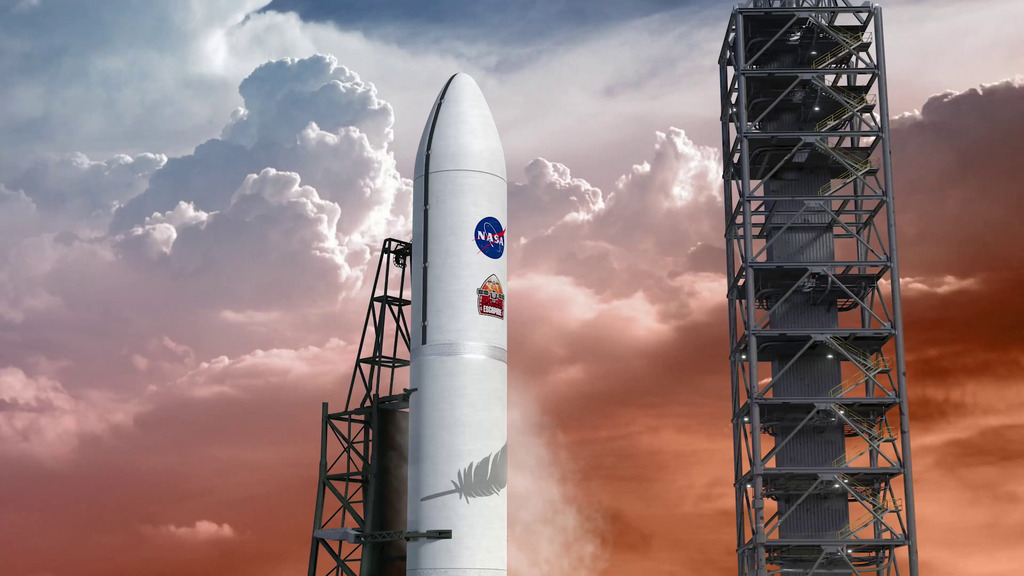
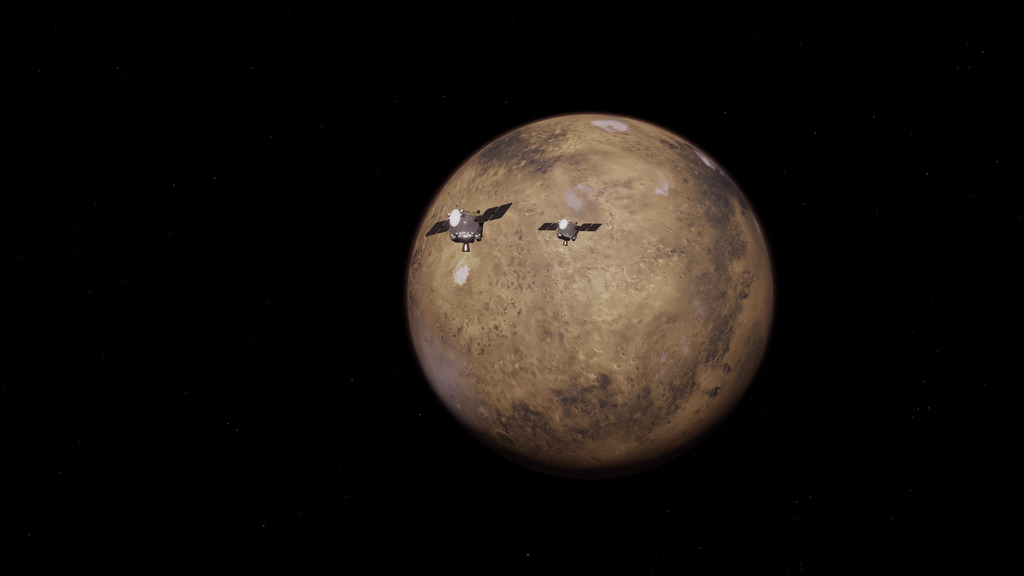
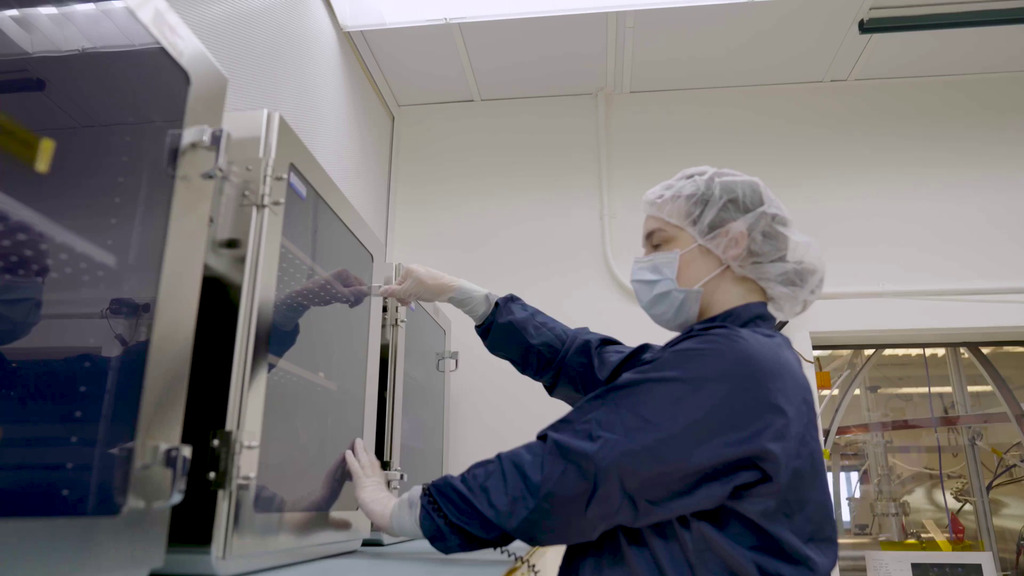
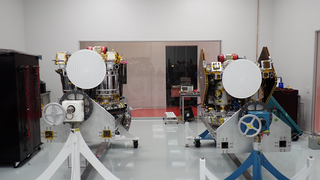
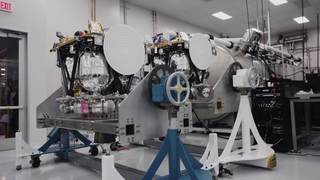
![Music Credit: "Inviolable" by Bob E. Thole [BUMA] via Universal Production MusicAnimation Credits: James Rattray/Rocket Lab USA; Blue Origin](/vis/a010000/a014600/a014664/ESCAPADE_Trailer_thumb.png)
